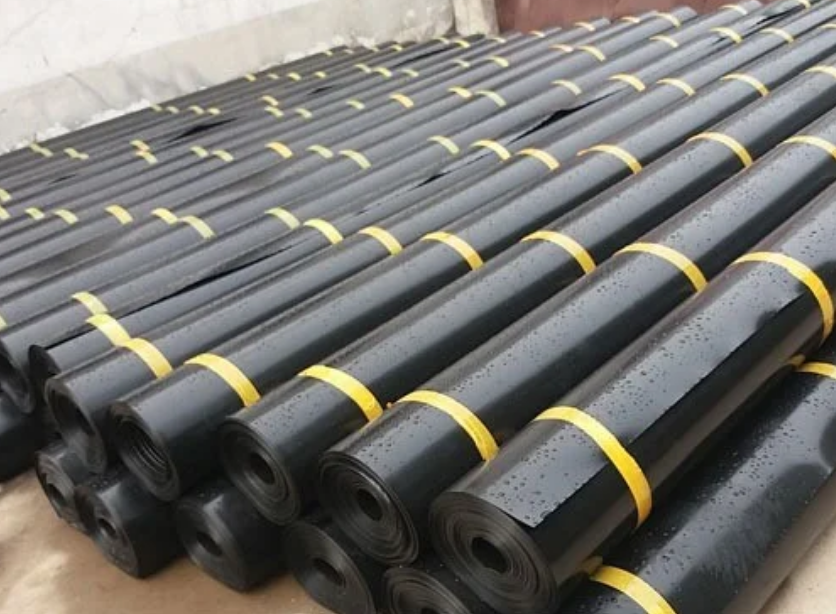
-
 Español
Español
-
 Portugues
Portugues
-
 Pусский
Pусский
-
 Français
Français
-
 Deutsch
Deutsch
-
 日本語
日本語
-
 한국어
한국어
-
 العربية
العربية
-
 Italiano
Italiano
-
 Nederlands
Nederlands
-
 Ελληνικά
Ελληνικά
-
 Svenska
Svenska
-
 Polski
Polski
-
 ไทย
ไทย
-
 Türk dili
Türk dili
-
 हिन्दी
हिन्दी
-
 Indonesia
Indonesia
-
 Melayu
Melayu
-
 Tiếng Việt
Tiếng Việt
-
 中文
中文
-
 dansk
dansk
-
 Magyar
Magyar
-
 қазақ
қазақ
-
 বাংলা
বাংলা
-
 עִברִית
עִברִית
-
 čeština
čeština
-
 Soomaali
Soomaali
-
 မြန်မာ
မြန်မာ
-
 فارسی
فارسی
-
 українська
українська
-
 norsk
norsk
-
 Gaeilge
Gaeilge
-
 беларускі
беларускі
-
 Română
Română
-
 ພາສາລາວ
ພາສາລາວ
-
 Filipino
Filipino
-
 lietuvių
lietuvių
-
 Cymraeg
Cymraeg
-
 македонски
македонски
-
 Suomalainen
Suomalainen
-
 slovenský
slovenský
-
 o'zbek
o'zbek
-
 اردو
اردو
-
 հայերեն
հայերեն
-
 Igbo
Igbo
-
 български
български
-
 سنڌي
سنڌي
-
 Shona
Shona
-
 සිංහල
සිංහල
-
 Hrvatski
Hrvatski
-
 íslenskur
íslenskur
-
 galego
galego
-
 català
català
-
 Zulu South Africa
Zulu South Africa
-
 Afrikaans isiXhosa
Afrikaans isiXhosa
-
 ಕನ್ನಡ
ಕನ್ನಡ
-
 lëtzebuergesch
lëtzebuergesch
-
 Indonésia Sunda
Indonésia Sunda
-
 basa jawa
basa jawa
-
 ગુજરાતી
ગુજરાતી
-
 Кыргызча
Кыргызча
-
 тоҷикӣ
тоҷикӣ
-
 Србија
Србија
-
 Twi
Twi
-
 Hawaii
Hawaii
-
 Cebu
Cebu
-
 नेपाल
नेपाल
-
 euskara
euskara
-
 Kurdî
Kurdî
-
 frissi
frissi
-
 יידיש
יידיש
-
 latvija
latvija
-
 slovenija
slovenija
-
 kiswahili
kiswahili
-
 ਪੰਜਾਬ
ਪੰਜਾਬ
-
 پښتو
پښتو
-
 საქართველოს
საქართველოს
-
 hua moni
hua moni
-
 bosna
bosna
-
 తెలుగు
తెలుగు
-
 தமிழ்
தமிழ்
-
 Kreyòl ayisyen
Kreyòl ayisyen
-
 Eesti
Eesti
-
 Corsica
Corsica
-
 Yoruba
Yoruba
-
 Gàidhlig na h-Alba
Gàidhlig na h-Alba
-
 Samoa
Samoa
-
 Монгол
Монгол
-
 Hausa
Hausa
-
 Azərbaycan
Azərbaycan
-
 አማራ
አማራ
-
 Shqipëria
Shqipëria
-
 Malagasy
Malagasy
-
 मराठी
मराठी
-
 മലയാളം
മലയാളം
-
 Malta
Malta
-
 ខ្មែរ
ខ្មែរ
-
 Chicheva
Chicheva
-
 中文(繁体)
中文(繁体)
-
 ଓଡିଆ
ଓଡିଆ
-
 Setswana
Setswana
-
 Afrikaans
Afrikaans
-
 Aymara
Aymara
-
 Башҡорт
Башҡорт
-
 Türkmenler
Türkmenler
-
 ትግሪኛ
ትግሪኛ
-
 Afaan Oromoo
Afaan Oromoo
-
 অসমীয়া
অসমীয়া
-
 Kinyarwanda
Kinyarwanda
-
 Ilocano
Ilocano
-
 Wolof
Wolof
-
 अवधी
अवधी
-
 Oluganda
Oluganda
-
 Bikol
Bikol
-
 Fulɓe
Fulɓe
-
 Kikongo
Kikongo
-
 Sango
Sango
-
 ދިވެހި
ދިވެހި
-
 Lingala
Lingala
-
 मैथिली
मैथिली
-
 Tsonga
Tsonga
-
 ꯃꯦꯏ ꯊꯥꯏ꯫
ꯃꯦꯏ ꯊꯥꯏ꯫
-
 brezhoneg
brezhoneg
-
 Furlan
Furlan
-
 नेवा
नेवा
-
 རྫོང་ཁ
རྫོང་ཁ
-
 Santali
Santali
-
 Аҧсуа
Аҧсуа
-
 Нохчийн
Нохчийн
-
 Чӑваш
Чӑваш
-
 Татар
Татар
-
 Batak Karo
Batak Karo
-
 دری
دری
-
 Diura
Diura
-
 Fengyu
Fengyu
-
 Eʋegbe
Eʋegbe
-
 Iban
Iban
-
 Fiji
Fiji
-
 Tonga
Tonga
-
 Inuktitut
Inuktitut
-
 Nahuatl
Nahuatl
-
 maaya yucatec
maaya yucatec
-
 Runasimi
Runasimi
-
 guarani
guarani
-
 Qafar
Qafar
-
 Acholi
Acholi
-
 Dinka
Dinka
-
 Luo
Luo
-
 Lundi
Lundi
-
 isiNdebele
isiNdebele
-
 Tshivenḓa
Tshivenḓa
-
 Sesotho sa Leboa
Sesotho sa Leboa
-
 Sesotho sa Borwa
Sesotho sa Borwa
-
 Ndumbe
Ndumbe
-
 Papuan Pidgin
Papuan Pidgin
-
 Rromani ćhib
Rromani ćhib
-
 Thok Nath
Thok Nath
yuxiatugong@163.com
+86 18353494641
-
 Español
Español
-
 Portugues
Portugues
-
 Pусский
Pусский
-
 Français
Français
-
 Deutsch
Deutsch
-
 日本語
日本語
-
 한국어
한국어
-
 العربية
العربية
-
 Italiano
Italiano
-
 Nederlands
Nederlands
-
 Ελληνικά
Ελληνικά
-
 Svenska
Svenska
-
 Polski
Polski
-
 ไทย
ไทย
-
 Türk dili
Türk dili
-
 हिन्दी
हिन्दी
-
 Indonesia
Indonesia
-
 Melayu
Melayu
-
 Tiếng Việt
Tiếng Việt
-
 中文
中文
-
 dansk
dansk
-
 Magyar
Magyar
-
 қазақ
қазақ
-
 বাংলা
বাংলা
-
 עִברִית
עִברִית
-
 čeština
čeština
-
 Soomaali
Soomaali
-
 မြန်မာ
မြန်မာ
-
 فارسی
فارسی
-
 українська
українська
-
 norsk
norsk
-
 Gaeilge
Gaeilge
-
 беларускі
беларускі
-
 Română
Română
-
 ພາສາລາວ
ພາສາລາວ
-
 Filipino
Filipino
-
 lietuvių
lietuvių
-
 Cymraeg
Cymraeg
-
 македонски
македонски
-
 Suomalainen
Suomalainen
-
 slovenský
slovenský
-
 o'zbek
o'zbek
-
 اردو
اردو
-
 հայերեն
հայերեն
-
 Igbo
Igbo
-
 български
български
-
 سنڌي
سنڌي
-
 Shona
Shona
-
 සිංහල
සිංහල
-
 Hrvatski
Hrvatski
-
 íslenskur
íslenskur
-
 galego
galego
-
 català
català
-
 Zulu South Africa
Zulu South Africa
-
 Afrikaans isiXhosa
Afrikaans isiXhosa
-
 ಕನ್ನಡ
ಕನ್ನಡ
-
 lëtzebuergesch
lëtzebuergesch
-
 Indonésia Sunda
Indonésia Sunda
-
 basa jawa
basa jawa
-
 ગુજરાતી
ગુજરાતી
-
 Кыргызча
Кыргызча
-
 тоҷикӣ
тоҷикӣ
-
 Србија
Србија
-
 Twi
Twi
-
 Hawaii
Hawaii
-
 Cebu
Cebu
-
 नेपाल
नेपाल
-
 euskara
euskara
-
 Kurdî
Kurdî
-
 frissi
frissi
-
 יידיש
יידיש
-
 latvija
latvija
-
 slovenija
slovenija
-
 kiswahili
kiswahili
-
 ਪੰਜਾਬ
ਪੰਜਾਬ
-
 پښتو
پښتو
-
 საქართველოს
საქართველოს
-
 hua moni
hua moni
-
 bosna
bosna
-
 తెలుగు
తెలుగు
-
 தமிழ்
தமிழ்
-
 Kreyòl ayisyen
Kreyòl ayisyen
-
 Eesti
Eesti
-
 Corsica
Corsica
-
 Yoruba
Yoruba
-
 Gàidhlig na h-Alba
Gàidhlig na h-Alba
-
 Samoa
Samoa
-
 Монгол
Монгол
-
 Hausa
Hausa
-
 Azərbaycan
Azərbaycan
-
 አማራ
አማራ
-
 Shqipëria
Shqipëria
-
 Malagasy
Malagasy
-
 मराठी
मराठी
-
 മലയാളം
മലയാളം
-
 Malta
Malta
-
 ខ្មែរ
ខ្មែរ
-
 Chicheva
Chicheva
-
 中文(繁体)
中文(繁体)
-
 ଓଡିଆ
ଓଡିଆ
-
 Setswana
Setswana
-
 Afrikaans
Afrikaans
-
 Aymara
Aymara
-
 Башҡорт
Башҡорт
-
 Türkmenler
Türkmenler
-
 ትግሪኛ
ትግሪኛ
-
 Afaan Oromoo
Afaan Oromoo
-
 অসমীয়া
অসমীয়া
-
 Kinyarwanda
Kinyarwanda
-
 Ilocano
Ilocano
-
 Wolof
Wolof
-
 अवधी
अवधी
-
 Oluganda
Oluganda
-
 Bikol
Bikol
-
 Fulɓe
Fulɓe
-
 Kikongo
Kikongo
-
 Sango
Sango
-
 ދިވެހި
ދިވެހި
-
 Lingala
Lingala
-
 मैथिली
मैथिली
-
 Tsonga
Tsonga
-
 ꯃꯦꯏ ꯊꯥꯏ꯫
ꯃꯦꯏ ꯊꯥꯏ꯫
-
 brezhoneg
brezhoneg
-
 Furlan
Furlan
-
 नेवा
नेवा
-
 རྫོང་ཁ
རྫོང་ཁ
-
 Santali
Santali
-
 Аҧсуа
Аҧсуа
-
 Нохчийн
Нохчийн
-
 Чӑваш
Чӑваш
-
 Татар
Татар
-
 Batak Karo
Batak Karo
-
 دری
دری
-
 Diura
Diura
-
 Fengyu
Fengyu
-
 Eʋegbe
Eʋegbe
-
 Iban
Iban
-
 Fiji
Fiji
-
 Tonga
Tonga
-
 Inuktitut
Inuktitut
-
 Nahuatl
Nahuatl
-
 maaya yucatec
maaya yucatec
-
 Runasimi
Runasimi
-
 guarani
guarani
-
 Qafar
Qafar
-
 Acholi
Acholi
-
 Dinka
Dinka
-
 Luo
Luo
-
 Lundi
Lundi
-
 isiNdebele
isiNdebele
-
 Tshivenḓa
Tshivenḓa
-
 Sesotho sa Leboa
Sesotho sa Leboa
-
 Sesotho sa Borwa
Sesotho sa Borwa
-
 Ndumbe
Ndumbe
-
 Papuan Pidgin
Papuan Pidgin
-
 Rromani ćhib
Rromani ćhib
-
 Thok Nath
Thok Nath

News Center
News Center
HOT PRODUCT
“HDPE Geomembranes Lead 2025’s Containment Technology Revolution”
2025-11-14 08:36:14

HDPE Geomembranes Lead 2025’s Containment Technology Revolution
Introduction
As the world faces increasing environmental challenges, the demand for advanced containment solutions has never been greater. High-Density Polyethylene (HDPE) geomembranes are emerging as a cornerstone of modern containment technology, revolutionizing industries such as waste management, water conservation, mining, and agriculture. By 2025, HDPE geomembranes are expected to dominate the market due to their durability, chemical resistance, and cost-effectiveness. This article explores the key advantages of HDPE geomembranes, their applications, technological advancements, and their role in shaping the future of containment systems.
---
1. What Are HDPE Geomembranes?
HDPE geomembranes are synthetic liners made from high-density polyethylene, a thermoplastic polymer known for its high strength-to-density ratio. These geomembranes are manufactured through extrusion processes, resulting in flexible, impermeable sheets that serve as barriers against liquid and gas migration.
Key Properties of HDPE Geomembranes:
- Durability: Resistant to punctures, UV radiation, and extreme temperatures.
- Chemical Resistance: Impervious to most acids, alkalis, and organic solvents.
- Longevity: Lifespan exceeding 50 years under proper installation and maintenance.
- Flexibility: Adaptable to various terrains and engineering designs.
- Cost-Effectiveness: Lower long-term costs compared to traditional containment methods.
These properties make HDPE geomembranes ideal for critical containment applications where leakage or contamination must be prevented.
---
2. Applications of HDPE Geomembranes in 2025 and Beyond
2.1. Environmental Protection and Waste Management
One of the most critical applications of HDPE geomembranes is in landfill liners and caps. With increasing waste generation globally, preventing leachate from contaminating groundwater is a top priority. HDPE geomembranes act as impermeable barriers, ensuring hazardous substances do not seep into the environment.
Additionally, geomembranes are used in:
- Hazardous waste containment (industrial byproducts, nuclear waste).
- Mining tailings ponds to prevent toxic runoff.
- Wastewater treatment lagoons to contain effluents.
2.2. Water Conservation and Aquaculture
Water scarcity is a growing concern, making efficient water storage and management essential. HDPE geomembranes are widely used in:
- Reservoirs and canals to prevent seepage.
- Aquaculture ponds to maintain water quality and prevent contamination.
- Rainwater harvesting systems to store water efficiently.
2.3. Mining Industry
The mining sector relies on HDPE geomembranes for:
- Heap leach pads to recover metals without environmental contamination.
- Process water containment to manage mining effluents.
- Tailings storage facilities to prevent toxic spills.
2.4. Agriculture and Irrigation
Farmers use HDPE geomembranes for:
- Pond liners to store irrigation water.
- Hydroponic systems to prevent water loss.
- Manure lagoons to control nutrient runoff.
2.5. Energy Sector
In the energy industry, HDPE geomembranes are crucial for:
- Solar pond liners in concentrated solar power plants.
- Oil and gas containment to prevent spills in storage areas.
- Geothermal energy projects to manage brine solutions.
---
3. Technological Advancements in HDPE Geomembranes
By 2025, innovations in HDPE geomembrane technology will further enhance performance and sustainability.
3.1. Enhanced Material Formulations
New polymer blends and additives are improving:
- UV resistance for longer outdoor exposure.
- Flexibility at low temperatures for use in cold climates.
- Self-healing properties to repair minor punctures automatically.
3.2. Smart Geomembranes
Integration with IoT (Internet of Things) sensors allows:
- Real-time leak detection using embedded sensors.
- Structural health monitoring to assess geomembrane integrity.
- Predictive maintenance to extend service life.
3.3. Sustainable Manufacturing
Eco-friendly production methods include:
- Recycled HDPE materials to reduce environmental impact.
- Lower carbon footprint manufacturing through energy-efficient processes.
- Biodegradable additives for end-of-life disposal.
3.4. Advanced Installation Techniques
New installation methods improve efficiency:
- Robotic welding for precise seam integrity.
- Prefabricated panels to reduce on-site labor.
- Automated quality control using drones and AI.
---
4. Why HDPE Geomembranes Will Dominate in 2025
Several factors contribute to the growing dominance of HDPE geomembranes:
4.1. Regulatory Compliance
Stricter environmental regulations require industries to adopt reliable containment solutions. HDPE geomembranes meet international standards (e.g., ASTM, GRI) for leak prevention and environmental safety.
4.2. Cost Efficiency
Compared to alternatives like concrete or clay liners, HDPE geomembranes offer:
- Lower installation costs (faster deployment).
- Reduced maintenance expenses (longer lifespan).
- Minimal repair needs (high puncture resistance).
4.3. Versatility
HDPE geomembranes can be customized for:
- Different thicknesses (0.5mm to 3mm).
- Reinforced variants for high-stress applications.
- Textured surfaces for better friction and stability.
4.4. Global Infrastructure Growth
Rapid urbanization and industrialization in emerging economies drive demand for:
- Landfills and wastewater treatment plants.
- Mining and energy projects.
- Agricultural water management systems.
4.5. Climate Change Adaptation
As extreme weather events increase, HDPE geomembranes provide:
- Flood protection in water containment systems.
- Drought resilience by preventing water loss.
- Contamination control in disaster-prone areas.
---
5. Challenges and Future Outlook
Despite their advantages, HDPE geomembranes face challenges:
- Installation errors (poor welding, subgrade preparation).
- Thermal expansion/contraction in extreme climates.
- Recycling difficulties at end-of-life.
However, ongoing research aims to:
- Develop biodegradable HDPE alternatives.
- Improve recycling technologies.
- Enhance automation in installation and monitoring.
By 2025, HDPE geomembranes will be at the forefront of containment technology, offering sustainable, cost-effective, and high-performance solutions for a wide range of industries.
---
Conclusion
HDPE geomembranes are set to lead the containment technology revolution in 2025, driven by their unmatched durability, chemical resistance, and adaptability. As industries and governments prioritize environmental protection and resource efficiency, HDPE geomembranes will play a pivotal role in waste management, water conservation, mining, agriculture, and energy sectors. With continuous advancements in material science, smart technology, and sustainable manufacturing, HDPE geomembranes will remain the gold standard for containment solutions well into the future.
The next decade will see even greater innovations, ensuring that HDPE geomembranes not only meet but exceed the demands of a rapidly evolving world.
- Previous page: “Engineering Focus: Non-Woven Geotextile Fabrics Drive Landfill Base Efficiency”
- Next page: None








 Phone
Phone
Comment
(0)